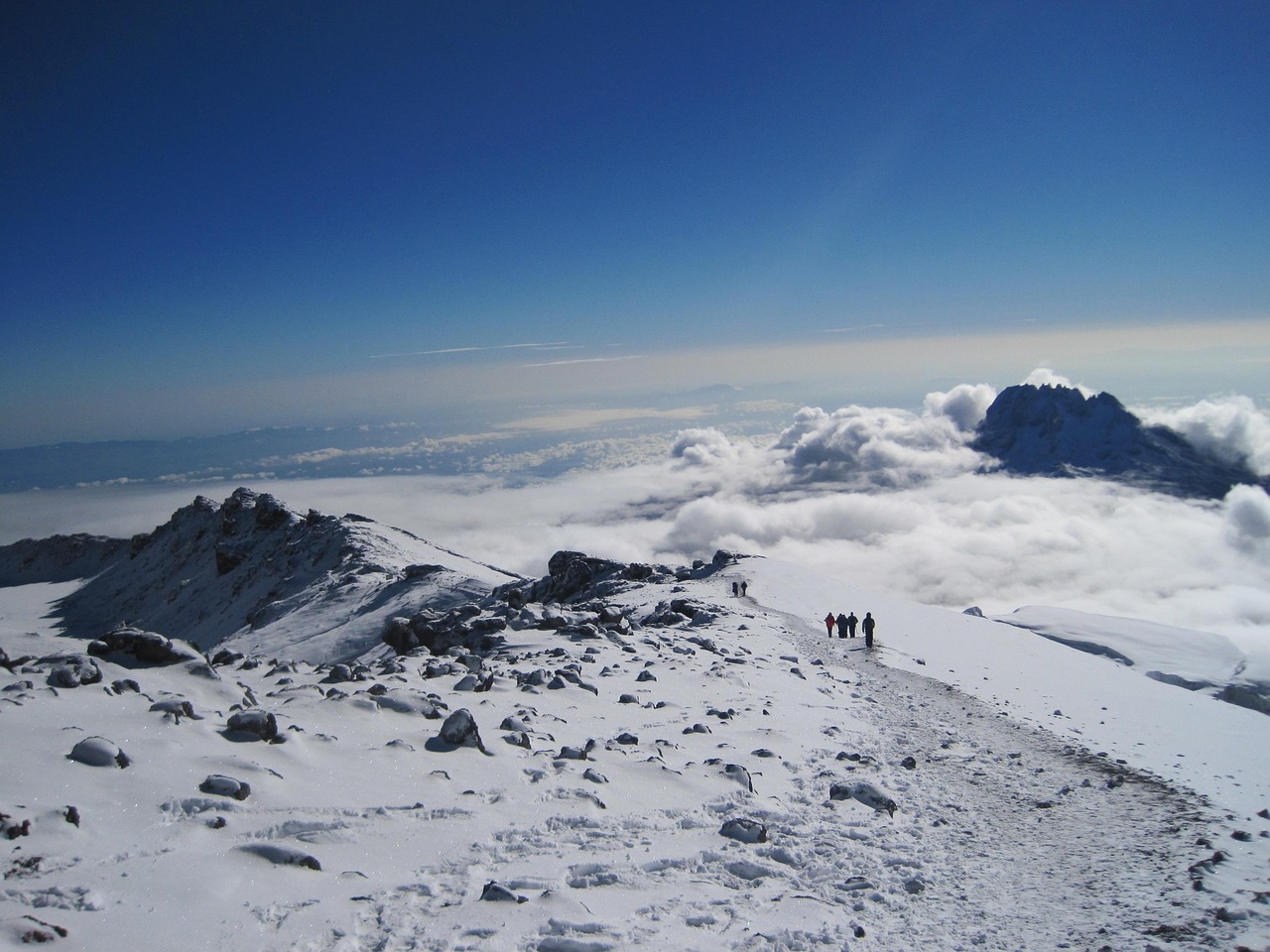
Mount Kilimanjaro, the highest mountain in Africa, stands at 5,895 meters (19,341 feet) above sea level. This iconic peak in Tanzania is one of the world’s most popular trekking destinations, attracting adventurers from all over the globe. Unlike many high-altitude climbs, Kilimanjaro is a non-technical trek, making it accessible to both seasoned hikers and first-time climbers.
Why Trek Mount Kilimanjaro?
1. Achievable for Many
Unlike other peaks of similar height, Kilimanjaro does not require technical mountaineering skills. With proper preparation and acclimatization, even those with minimal trekking experience can reach the summit.
2. Diverse Ecosystems
A trek up Kilimanjaro takes you through multiple climate zones, from lush rainforests at the base to alpine deserts and the icy summit. The scenery changes dramatically, offering a unique trekking experience.
3. Breathtaking Sunrises
Reaching Uhuru Peak, the summit of Kilimanjaro, at sunrise is an unforgettable experience. The panoramic views over the African plains make the challenging climb worthwhile.
Best Routes for Climbing Kilimanjaro
There are several routes to the summit, each offering a different experience in terms of difficulty, scenery, and success rates.
1. Marangu Route (5-6 Days)
- Known as the “Coca-Cola Route,” it is the only route with hut accommodations.
- It is one of the shortest and least expensive routes but has a lower success rate due to a shorter acclimatization period.
2. Machame Route (6-7 Days)
- Also called the “Whiskey Route,” it is popular for its scenic beauty and gradual acclimatization.
- A good balance of challenge and success rate.
3. Lemosho Route (7-8 Days)
- Considered one of the most beautiful routes, offering excellent acclimatization.
- Higher success rate due to a slower ascent.
4. Rongai Route (6-7 Days)
- The only route approaching from the north, offering a quieter experience.
- Less crowded but has fewer variations in landscape.
5. Northern Circuit Route (8-9 Days)
- The longest route with the highest success rate due to gradual acclimatization.
- Ideal for those who want to fully enjoy the trek and increase their chances of reaching the summit.
Best Time to Climb Kilimanjaro
The best months for trekking Kilimanjaro are:
✅ January – March: Cooler temperatures and fewer crowds.
✅ June – October: Dry weather with clear skies, but more crowded.
The rainy seasons (April-May and November) are less ideal due to slippery trails and lower visibility.
Training and Preparation
1. Physical Fitness
- Engage in cardio training (hiking, running, cycling) to build endurance.
- Strengthen your legs and core with squats, lunges, and stair climbing.
- Practice hiking with a backpack to simulate trek conditions.
2. Acclimatization
- Altitude sickness is a major challenge on Kilimanjaro. Choose a route that allows enough time to adjust.
- Follow the “climb high, sleep low” principle.
- Stay hydrated and avoid alcohol before and during the trek.
3. Packing Essentials
- Clothing: Layered clothing for varying temperatures, including a down jacket and waterproof gear.
- Footwear: Sturdy, waterproof trekking boots with good ankle support.
- Gear: Headlamp, trekking poles, gloves, sunglasses, and a high-quality sleeping bag.
What to Expect on the Trek
- Daytime temperatures can range from 20°C (68°F) at the base to below freezing at the summit.
- Nights are extremely cold, especially near the peak.
- Expect long trekking hours (5-8 hours per day, except summit night, which can be 10+ hours).
The Final Push: Summit Night
The most challenging part of the trek is summit night. You’ll start the final ascent around midnight, climbing in extreme cold and darkness. The goal is to reach Uhuru Peak by sunrise. The last stretch is exhausting, but the sense of accomplishment is unmatched.
Cost of Climbing Kilimanjaro
A Kilimanjaro trek typically costs between $2,000 – $5,000, depending on the route, operator, and group size. This includes:
✔️ Park fees
✔️ Guides and porters
✔️ Accommodation and meals
✔️ Safety equipment
Conclusion
Trekking Mount Kilimanjaro is a life-changing experience that challenges both the body and mind. Whether you’re a seasoned trekker or a first-time climber, with proper preparation and determination, reaching the Roof of Africa is possible.







